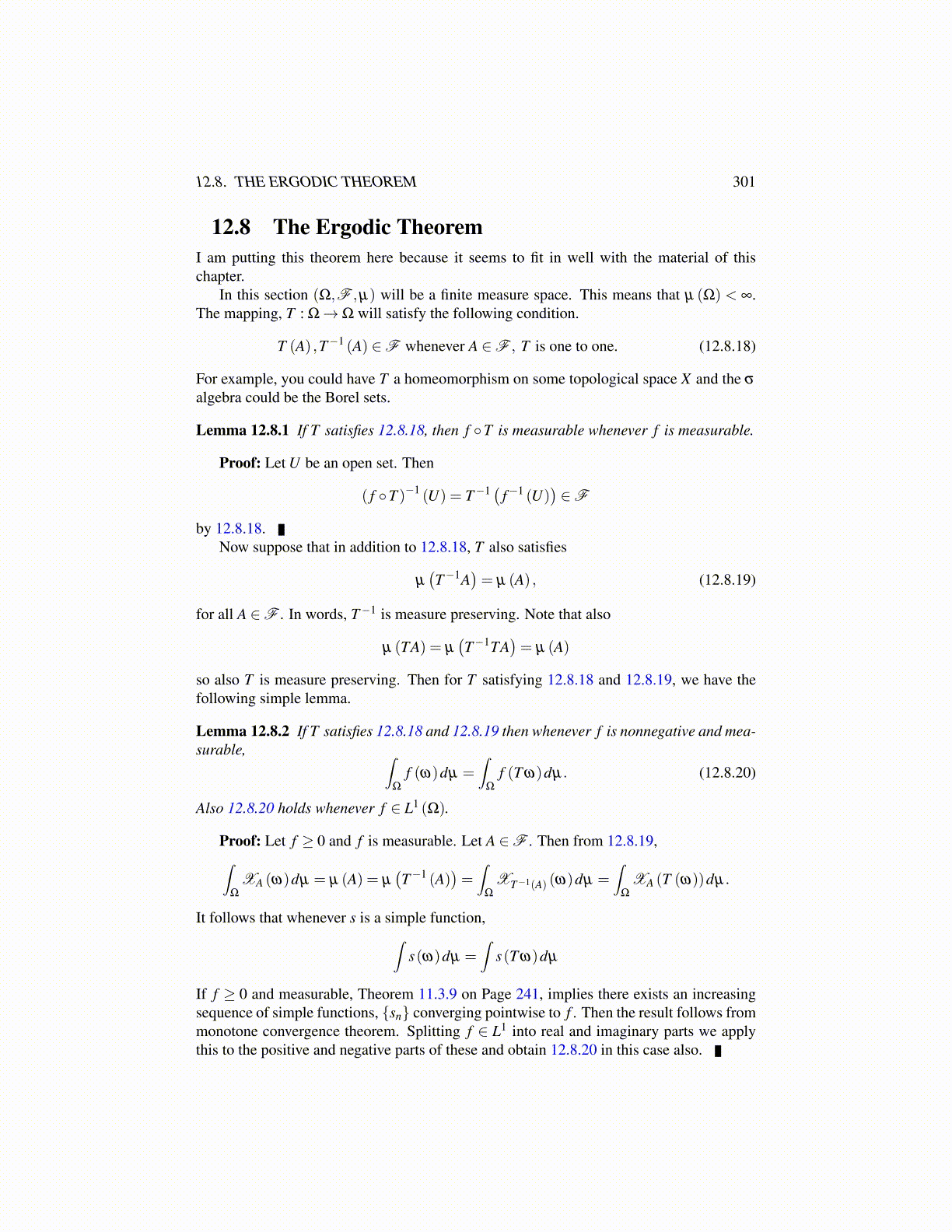
12.8. THE ERGODIC THEOREM 301
12.8 The Ergodic TheoremI am putting this theorem here because it seems to fit in well with the material of thischapter.
In this section (Ω,F ,µ) will be a finite measure space. This means that µ (Ω) < ∞.The mapping, T : Ω→Ω will satisfy the following condition.
T (A) ,T−1 (A) ∈F whenever A ∈F , T is one to one. (12.8.18)
For example, you could have T a homeomorphism on some topological space X and the σ
algebra could be the Borel sets.
Lemma 12.8.1 If T satisfies 12.8.18, then f ◦T is measurable whenever f is measurable.
Proof: Let U be an open set. Then
( f ◦T )−1 (U) = T−1 ( f−1 (U))∈F
by 12.8.18.Now suppose that in addition to 12.8.18, T also satisfies
µ(T−1A
)= µ (A) , (12.8.19)
for all A ∈F . In words, T−1 is measure preserving. Note that also
µ (TA) = µ(T−1TA
)= µ (A)
so also T is measure preserving. Then for T satisfying 12.8.18 and 12.8.19, we have thefollowing simple lemma.
Lemma 12.8.2 If T satisfies 12.8.18 and 12.8.19 then whenever f is nonnegative and mea-surable, ∫
Ω
f (ω)dµ =∫
Ω
f (T ω)dµ. (12.8.20)
Also 12.8.20 holds whenever f ∈ L1 (Ω).
Proof: Let f ≥ 0 and f is measurable. Let A ∈F . Then from 12.8.19,∫Ω
XA (ω)dµ = µ (A) = µ(T−1 (A)
)=∫
Ω
XT−1(A) (ω)dµ =∫
Ω
XA (T (ω))dµ.
It follows that whenever s is a simple function,∫s(ω)dµ =
∫s(T ω)dµ
If f ≥ 0 and measurable, Theorem 11.3.9 on Page 241, implies there exists an increasingsequence of simple functions, {sn} converging pointwise to f . Then the result follows frommonotone convergence theorem. Splitting f ∈ L1 into real and imaginary parts we applythis to the positive and negative parts of these and obtain 12.8.20 in this case also.